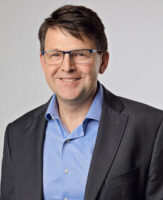
Plenary talk title: The Stories We Tell Each Other: Biological Theory as Structured Narrative (10:30-11:00, Oct 10th)
People have long understood the world through stories. Stories may contain lessons about what to do or what not to do or present ideas as to why something is the way it is. More often, they illustrate the complexity and nuance of the human experience. Science is different from stories, but perhaps less so than we are taught to believe, particularly in the biological sciences. Theory in biology is anchored by concepts. Those concepts are linked in ways that structure questions and research agendas, characterizations of events and conditions in nature, predictions about and control of biological phenomena and, occasionally, explanations. Explanations often take the form of making sense of particular observations in light of more general regularities that make reference to concepts and the relations among them. Throughout, there is an element of narrative in which the particular is made sense of in light of the more general way of things. We take the example of the framework of concepts that link the study of evolution to that of development and the ways in which those concepts can also inform the study of human health. We argue for structured narrative rather than formal theory as a way to understand the creation of such frameworks. We relate this to narratives in Indigenous stories to draw out both the similarities and differences between this process and other, perhaps more fundamental ways, in which people have seek to understand their experience of relation to nature.
———————————————-
EN Benedikt Hallgrímsson is Professor and Head of the Dept of Cell Biology & Anatomy at the University of Calgary. The central motivating question for his research program is how genetic and environmental influences impact developmental systems to produce anatomical variation. His program uniquely integrates advanced imaging and measurement (morphometrics) with developmental biology to understand the underlying mechanisms for phenotypic variation. His work extends to the mechanisms that underlie structural birth defects such as craniofacial anomalies, to the anatomical aspects of genetic disease as well as the relationship between evolution and development. He is the Deputy Director of the Alberta Children’s Hospital Research Institute and co-leads One Child Every Child’s Precision Health and Wellness Theme, and Comprehensive Data Accelerator which aims to improve outcomes for child health in Canada. He was awarded the Rohlf Medal for Excellence in Morphometrics in 2015 and is a Fellow of the American Association for the Advancement of Science as well as the Canadian Academy of Health Sciences (2020).